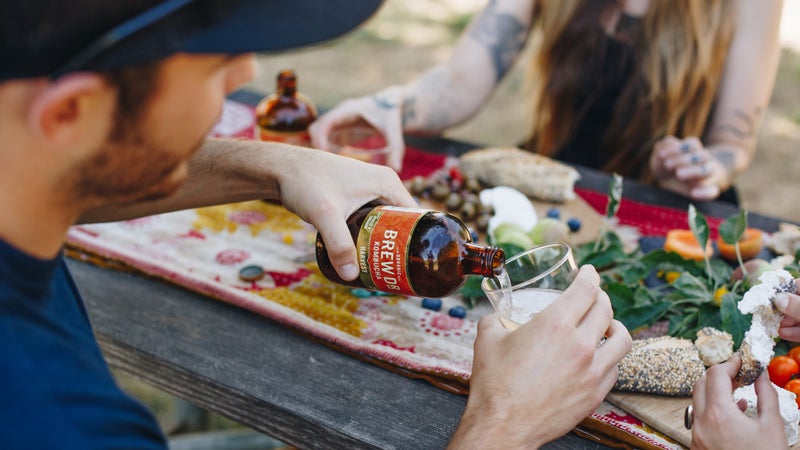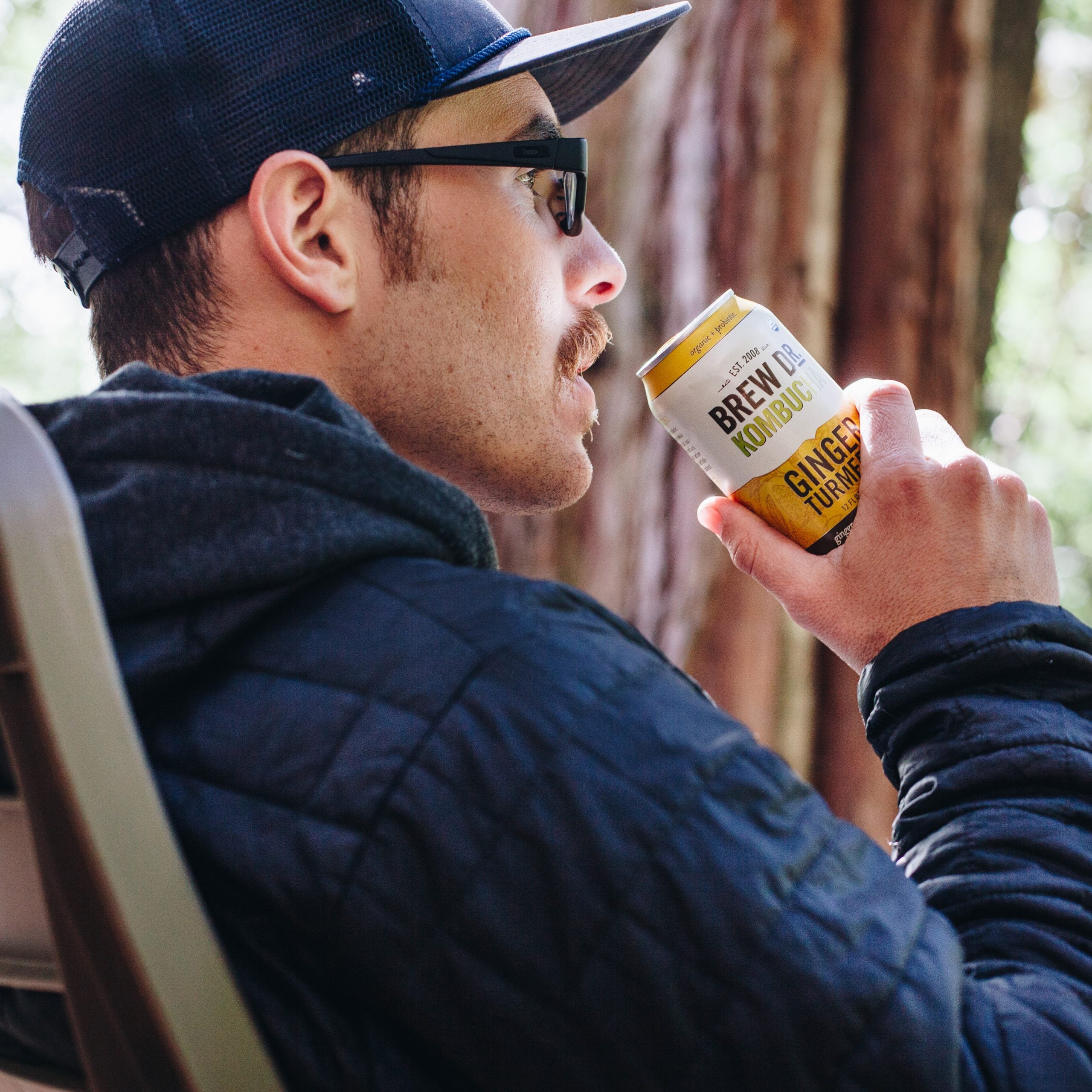When you hear the word kombucha, your mouth might pucker up at the thought of a drink low on flavor but heavy on vinegar. And while that might have been true back when the the drink first appeared on the refrigerated shelves of natural food stores, today that’s not the case. We reached out to our friends at Brew Dr. Kombucha to answer all of our questions on the increasingly-popular drink and to explain why you need to give it another sip.
What Is It Again, Exactly?
For the uninitiated, kombucha is fermented tea, and studies have shown that fermented foods can encourage gut bacteria diversity, aiding in digestion. Kombucha brewers and their products vary widely in terms of processing, flavors, and calorie content, so it’s important to do your research and test a few to find which one you like most.
, for instance, originated in the company’s popular teahouses and follows the traditional brewing process. The company produces individual batches of an organic, 100 percent raw kombucha with only botanicals—roots, herbs, and dried fruits—as additives. The resulting product hits the right balance on the spectrum, smack between sweet and sour.
Other brewing processes used in the industry take a plain green or black tea into a fermentation vessel and then add juice or flavoring post-fermentation. This can make for a more tart, juicy, vinegary flavor profile instead of the traditional kombucha experience.
How It’s Made
The kombucha brewing process starts with the making of a batch of sweetened tea. Once brewed, brewers place their tea into a fermentation vessel along with a kombucha culture for approximately four weeks.
One by-product of fermentation is alcohol, sometimes as high as 3 percent, but producers are required by law to bring that level down below 0.5 percent.
Brew Dr. Kombucha sets itself apart by using a non-heat distillation process to remove alcohol so that the beneficial live and active cultures remain just that. Of course, it’d be a shame to just throw out that alcohol, which is why Brew Dr.’s in-house distillery, , uses it to make its own unique spirits.

Here to Stay
As consumers evolve along with kombucha, many bars are now offering the drink on tap as an alternative to beer. It’s a drink option that’s here to stay, as kombucha’s rapidly rising popularity reflects an overall trend toward health, wellness, and an active lifestyle. If you’re ready to try the next generation of kombucha, you’ll find bottles—and, in Brew Dr.’s case, cans—on shelves at a wide variety of national and local grocers.
is brewed and bottled in Portland, OR. Their authentic, 100% raw kombucha hosts naturally occurring live and active cultures in every bottle, and is crafted with the same high-quality and botanicals they serve at their teahouses. New this summer, you can get in aluminum cans at Whole Foods, making it more portable and deliciously refreshing than ever before.

